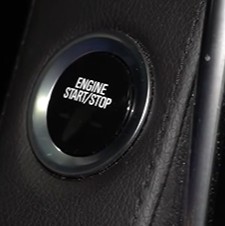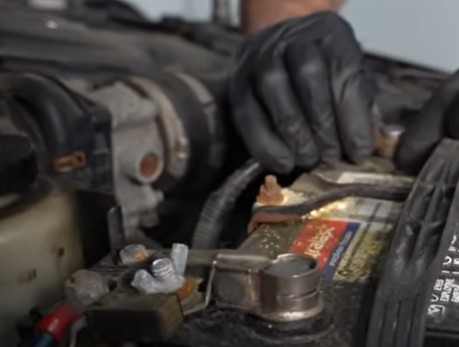Resetting your vehicle computer, also known as the Engine Control Unit (ECU), can resolve a variety of electronic issues, from frozen touchscreens to malfunctioning audio systems. This guide from CAR-TOOL.EDU.VN will walk you through the process of performing a vehicle computer reset, offering expert tips and troubleshooting advice to get your car back on track and suggest car diagnostic tools. You’ll also discover alternative solutions and preventative measures to keep your vehicle’s electronics running smoothly, reducing the need for frequent system resets.
Contents
- 1. Understanding the Need to Reset Vehicle Computer
- 2. Diagnosing Electronic Problems Before Resetting
- 2.1. Advanced Scan Tool Diagnostics
- 2.2. Visual Inspection and Component Checks
- 2.3. Using Multimeter to Test Components
- 3. Methods to Reset Vehicle Computer
- 3.1. The Soft Reset: Turning the Ignition On and Off
- 3.2. Global Reset: Disconnecting the Battery
- 3.3. Using a Scan Tool to Clear Codes
- 4. Post-Reset Procedures and Relearning
- 4.1. Idle Relearn Procedure
- 4.2. Transmission Adaptive Learning
- 4.3. Resetting Radio and Clock
- 5. When to Seek Professional Help
- 6. Tips for Maintaining Your Vehicle’s Electronic Systems
- 7. Understanding Vehicle Computer and Its Functions
- 7.1. Key Functions of Vehicle Computer
- 7.2. How Vehicle Computer Works
- 7.3. Types of Vehicle Computers
- 8. Common Misconceptions About Resetting Vehicle Computer
- 8.1. Resetting Will Erase All Problems
- 8.2. Resetting Will Void Warranty
- 8.3. Resetting Is Always Necessary
- 9. The Role of Software Updates in Vehicle Computer
- 9.1. Benefits of Software Updates
- 9.2. How to Obtain Software Updates
- 10. Tools Needed to Reset Vehicle Computer
- 11. Frequently Asked Questions (FAQ) About Vehicle Computer Reset
- 11.1. Will resetting my car’s computer clear all my settings?
- 11.2. How long should I disconnect the battery to reset the computer?
- 11.3. Can I reset my car’s computer while it’s running?
- 11.4. Will resetting my car’s computer fix my check engine light?
- 11.5. Is it safe to reset my car’s computer myself?
- 11.6. What happens after I reset my car’s computer?
- 11.7. How often should I reset my car’s computer?
- 11.8. Does resetting my car’s computer affect my car’s performance?
- 11.9. Can a mechanic reset my car’s computer?
- 11.10. Are there any risks involved in resetting my car’s computer?
- 12. Real-World Examples of Vehicle Computer Reset Success
- 13. Reset Vehicle Computer: Final Thoughts
1. Understanding the Need to Reset Vehicle Computer
Why might you need to reset your vehicle computer? Modern vehicles are increasingly reliant on sophisticated electronic systems. The ECU, acting as the car’s central nervous system, controls everything from engine performance to infotainment features. According to a study by the University of Michigan Transportation Research Institute in 2023, the average car has over 100 million lines of code, highlighting the complexity of these systems. When these systems malfunction, a computer reset can often be a simple and effective solution.
- Frozen Touchscreen: A unresponsive touchscreen can be incredibly frustrating.
- Audio Issues: Problems such as a non-functional radio or speaker system.
- Erratic Climate Control: Inconsistent heating or cooling performance.
- Warning Light Anomalies: False or persistent warning lights on the dashboard.
- Transmission Problems: Shifting issues or unusual behavior.
 Mechanic inspecting a car's computer system
Mechanic inspecting a car's computer system
2. Diagnosing Electronic Problems Before Resetting
Before you dive into resetting your vehicle computer, it’s essential to identify the root cause of the issue. Not all electronic glitches require a full reset; sometimes, a simple diagnostic check can pinpoint the problem.
2.1. Advanced Scan Tool Diagnostics
Using an advanced scan tool, you can read and record detailed diagnostic trouble codes (DTCs). Unlike basic OBD-II scanners that only display engine-related codes, advanced tools can access modules throughout the vehicle, providing insights into ABS, transmission, and body control systems.
2.2. Visual Inspection and Component Checks
- Check Fuses: Inspect all relevant fuses for the affected systems. A blown fuse is a common cause of electronic malfunctions.
- Inspect Wiring: Look for damaged, corroded, or loose wiring harnesses.
- Assess Sensors: Evaluate the condition of sensors related to the problem. For example, if you’re experiencing climate control issues, check the temperature sensors.
2.3. Using Multimeter to Test Components
A multimeter can be invaluable for testing the electrical continuity and voltage of various components. This can help you identify faulty parts such as switches, relays, and sensors before resorting to a computer reset.
3. Methods to Reset Vehicle Computer
There are several methods to reset your car’s computer, each with its own level of complexity and potential effectiveness. Choosing the right approach depends on the nature of the problem and your comfort level with automotive maintenance.
3.1. The Soft Reset: Turning the Ignition On and Off
The simplest method is a soft reset, which involves turning the ignition on and off. This is often the first step in troubleshooting minor electronic glitches.
- Turn off the ignition and remove the key.
- Wait for a few minutes, allowing all systems to power down.
- Reinsert the key and turn the ignition on, but don’t start the engine.
- Wait for another minute, then start the engine.
- Check if the issue has been resolved.
 Car's start/stop button
Car's start/stop button
3.2. Global Reset: Disconnecting the Battery
A more thorough method is the global reset, also known as a hard reset, which involves disconnecting the car’s battery. This process drains the capacitors in the vehicle’s electronic systems, effectively resetting the computer.
- Safety First: Wear safety glasses and gloves.
- Locate the Battery: Typically found under the hood or in the trunk.
- Disconnect the Negative Terminal: Use a wrench to loosen the nut on the negative (-) battery terminal and carefully disconnect the cable.
- Wait: Leave the terminal disconnected for 15 minutes to an hour to ensure a complete reset.
- Reconnect the Negative Terminal: Reattach the cable and tighten the nut securely.
- Start the Car: Turn on the ignition and start the engine.
- Check System Functionality: Verify that the electronic systems are functioning correctly.
Important Considerations:
- Auxiliary Batteries: If your vehicle has an auxiliary battery (often found in hybrid or electric cars), do not connect the disconnected terminal to the positive terminal. This could damage the electronic systems.
- Battery Condition: Ensure your battery is in good condition before attempting a reset. A weak or failing battery can cause further electronic issues.
3.3. Using a Scan Tool to Clear Codes
An alternative method involves using a scan tool to clear diagnostic trouble codes (DTCs) from the ECU.
- Connect the Scan Tool: Plug the scan tool into the OBD-II port, usually located under the dashboard.
- Turn on the Ignition: Turn the ignition on, but don’t start the engine.
- Read Codes: Use the scan tool to read and record any stored DTCs.
- Clear Codes: Select the option to clear the codes.
- Verify Functionality: Start the engine and check if the issue has been resolved.
4. Post-Reset Procedures and Relearning
After resetting your vehicle computer, it’s important to perform certain post-reset procedures to ensure optimal performance. The ECU needs to relearn various parameters to adapt to your driving style and environmental conditions.
4.1. Idle Relearn Procedure
The idle relearn procedure allows the ECU to recalibrate the engine’s idle speed.
- Start the Engine: Start the engine and let it run at idle.
- Allow to Warm Up: Allow the engine to reach its normal operating temperature.
- No Accessories: Ensure all accessories (A/C, headlights, radio) are turned off.
- Idle for Specified Time: Let the engine idle for the time specified in your vehicle’s repair manual (usually 5-10 minutes).
4.2. Transmission Adaptive Learning
Many modern transmissions have adaptive learning capabilities, which means they adjust their shift patterns based on your driving habits. After a reset, the transmission needs to relearn these patterns.
- Normal Driving: Drive the vehicle under normal conditions, varying your speed and acceleration.
- Avoid Aggressive Driving: Avoid aggressive acceleration and hard braking during the relearning process.
- Allow Time to Adapt: Allow the transmission time to adapt to your driving style (usually a few days of normal driving).
4.3. Resetting Radio and Clock
A global reset will typically erase radio presets and reset the clock.
- Radio Presets: Retune your favorite radio stations and save them as presets.
- Clock Setting: Reset the clock to the correct time.
5. When to Seek Professional Help
While resetting your vehicle computer can resolve many electronic issues, some problems require professional attention.
- Persistent Issues: If the problem returns shortly after a reset.
- Complex Diagnostic Codes: If the scan tool reveals complex or multiple diagnostic codes.
- Unfamiliar Symptoms: If you experience symptoms you’re not familiar with.
- Safety Concerns: If the issue affects critical safety systems such as ABS or airbags.
Consulting a qualified mechanic at a trusted repair shop ensures accurate diagnosis and effective repairs.
6. Tips for Maintaining Your Vehicle’s Electronic Systems
Preventative maintenance is key to minimizing electronic problems and reducing the need for frequent computer resets.
- Regular Battery Maintenance: Ensure your battery is in good condition and properly maintained. Clean the terminals regularly to prevent corrosion.
- Keep Wiring in Good Condition: Inspect wiring harnesses regularly for damage, and repair any issues promptly.
- Use Quality Replacement Parts: When replacing electronic components, use high-quality parts from reputable brands.
- Avoid Water Damage: Protect your vehicle’s electronic systems from water damage, which can cause corrosion and malfunctions.
- Regular Diagnostic Checks: Perform regular diagnostic checks using a scan tool to identify potential problems early on.
7. Understanding Vehicle Computer and Its Functions
The vehicle computer, also known as the Engine Control Unit (ECU) or Powertrain Control Module (PCM), is the brain of your car’s electronic systems. It’s responsible for controlling and monitoring a wide range of functions.
7.1. Key Functions of Vehicle Computer
- Engine Management: Controls fuel injection, ignition timing, and emissions control.
- Transmission Control: Manages shift patterns and torque converter lockup.
- Braking System Control: Interfaces with ABS and traction control systems.
- Body Control: Operates lighting, windows, and door locks.
- Climate Control: Regulates heating and cooling systems.
- Infotainment: Controls audio, navigation, and connectivity features.
7.2. How Vehicle Computer Works
The vehicle computer receives input from various sensors throughout the car. These sensors measure parameters such as engine temperature, air flow, throttle position, and vehicle speed. The computer processes this information and adjusts various actuators to control the engine, transmission, and other systems.
7.3. Types of Vehicle Computers
- Engine Control Unit (ECU): Primarily responsible for engine management.
- Transmission Control Module (TCM): Controls the transmission’s operation.
- Body Control Module (BCM): Manages body-related functions such as lighting and door locks.
- Anti-lock Braking System (ABS) Module: Controls the anti-lock braking system.
- Airbag Control Module (ACM): Manages the airbag system.
8. Common Misconceptions About Resetting Vehicle Computer
There are several misconceptions about resetting your vehicle computer. Understanding these myths can help you make informed decisions about your car’s maintenance.
8.1. Resetting Will Erase All Problems
While a reset can resolve many electronic glitches, it won’t fix mechanical problems or underlying issues. It’s essential to diagnose the root cause of the problem before attempting a reset.
8.2. Resetting Will Void Warranty
Resetting your vehicle computer will not void your warranty, unless the reset is performed improperly and causes damage. However, it’s always a good idea to consult your warranty documentation or speak with a dealership before performing any maintenance procedures.
8.3. Resetting Is Always Necessary
Not all electronic issues require a computer reset. Sometimes, a simple fix such as replacing a fuse or cleaning a sensor can resolve the problem.
9. The Role of Software Updates in Vehicle Computer
Software updates are an important part of maintaining your vehicle’s electronic systems. Manufacturers regularly release updates to improve performance, fix bugs, and add new features.
9.1. Benefits of Software Updates
- Improved Performance: Updates can optimize engine performance, transmission shifting, and other functions.
- Bug Fixes: Updates can resolve software glitches and improve system stability.
- New Features: Updates can add new features and capabilities to your vehicle’s electronic systems.
- Security Enhancements: Updates can improve security and protect against hacking and malware.
9.2. How to Obtain Software Updates
- Dealership: The most reliable way to obtain software updates is to visit a dealership. Technicians can use specialized equipment to update the vehicle’s computer.
- Over-the-Air (OTA) Updates: Some newer vehicles can receive software updates over the air via a Wi-Fi or cellular connection.
- Independent Repair Shops: Some independent repair shops have the capability to perform software updates.
10. Tools Needed to Reset Vehicle Computer
Having the right tools can make the process of resetting your vehicle computer much easier and more efficient.
- Wrench Set: Needed to disconnect the battery terminals.
- Socket Set: Useful for removing and reinstalling battery hold-down clamps.
- Scan Tool: Essential for reading and clearing diagnostic trouble codes.
- Multimeter: Helpful for testing electrical continuity and voltage.
- Battery Terminal Cleaner: Used to clean corroded battery terminals.
- Safety Glasses: Protect your eyes from debris and battery acid.
- Gloves: Protect your hands from battery acid and other chemicals.
 Battery terminal and wrench
Battery terminal and wrench
11. Frequently Asked Questions (FAQ) About Vehicle Computer Reset
11.1. Will resetting my car’s computer clear all my settings?
Yes, resetting your car’s computer can clear certain settings like radio presets and seat positions.
11.2. How long should I disconnect the battery to reset the computer?
Disconnect the negative battery terminal for at least 15 minutes, but longer is better.
11.3. Can I reset my car’s computer while it’s running?
No, you should never attempt to reset your car’s computer while it’s running.
11.4. Will resetting my car’s computer fix my check engine light?
Resetting the computer can turn off the check engine light, but it will reappear if the underlying issue is not resolved.
11.5. Is it safe to reset my car’s computer myself?
Yes, if you follow the correct procedures and take necessary safety precautions.
11.6. What happens after I reset my car’s computer?
You may need to perform an idle relearn procedure and reset your radio and clock.
11.7. How often should I reset my car’s computer?
Only reset your car’s computer when necessary to resolve electronic issues.
11.8. Does resetting my car’s computer affect my car’s performance?
It can improve performance by clearing glitches and allowing the computer to relearn optimal settings.
11.9. Can a mechanic reset my car’s computer?
Yes, mechanics have the tools and expertise to reset your car’s computer.
11.10. Are there any risks involved in resetting my car’s computer?
If done improperly, resetting your car’s computer can cause damage to the electronic systems.
12. Real-World Examples of Vehicle Computer Reset Success
Here are a few real-world examples of how resetting a vehicle computer can resolve electronic issues:
- Case 1: A driver experienced a frozen touchscreen in their 2018 Ford F-150. After disconnecting the battery for 30 minutes, the touchscreen returned to normal functionality.
- Case 2: A car owner noticed erratic climate control performance in their 2015 Honda Civic. Resetting the ECU by disconnecting the battery resolved the issue.
- Case 3: A technician used a scan tool to clear diagnostic trouble codes in a 2020 Toyota Camry, resolving a persistent check engine light.
13. Reset Vehicle Computer: Final Thoughts
Resetting your vehicle computer can be a useful troubleshooting technique for resolving a variety of electronic issues. By understanding the process, taking necessary precautions, and performing post-reset procedures, you can often get your car back on track quickly and efficiently. Remember to consult a qualified mechanic if you encounter persistent issues or are unsure about any step in the process.
At CAR-TOOL.EDU.VN, we understand the importance of maintaining your vehicle’s electronic systems. That’s why we offer a wide range of diagnostic tools, replacement parts, and expert advice to help you keep your car running smoothly.
Are you looking for reliable auto parts or diagnostic tools? Contact CAR-TOOL.EDU.VN today for expert advice and top-quality products. Our team of experienced professionals can help you find the right solutions for your automotive needs. Visit our website at CAR-TOOL.EDU.VN or contact us via WhatsApp at +1 (641) 206-8880. You can also visit us at 456 Elm Street, Dallas, TX 75201, United States. Let CAR-TOOL.EDU.VN be your trusted partner in automotive maintenance and repair!